Georgia O’Keeffe: finding beauty in the Unassuming
Explore Georgia O’Keeffe’s art and her unique perspective as she transforms nature’s details into seductive curves and enchanting portals. Jump into the captivating world of this iconic American painter.
share this!
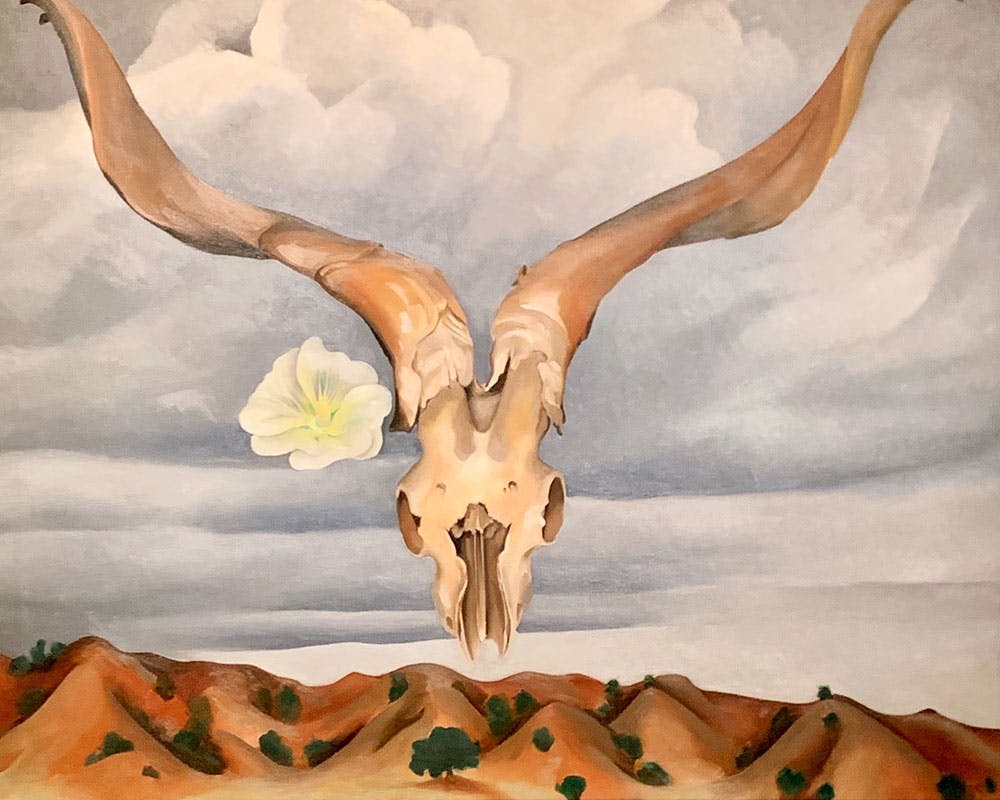
Only through selection, elimination, emphasis, do we arrive at the real meaning of things.
Georgia O’Keeffe
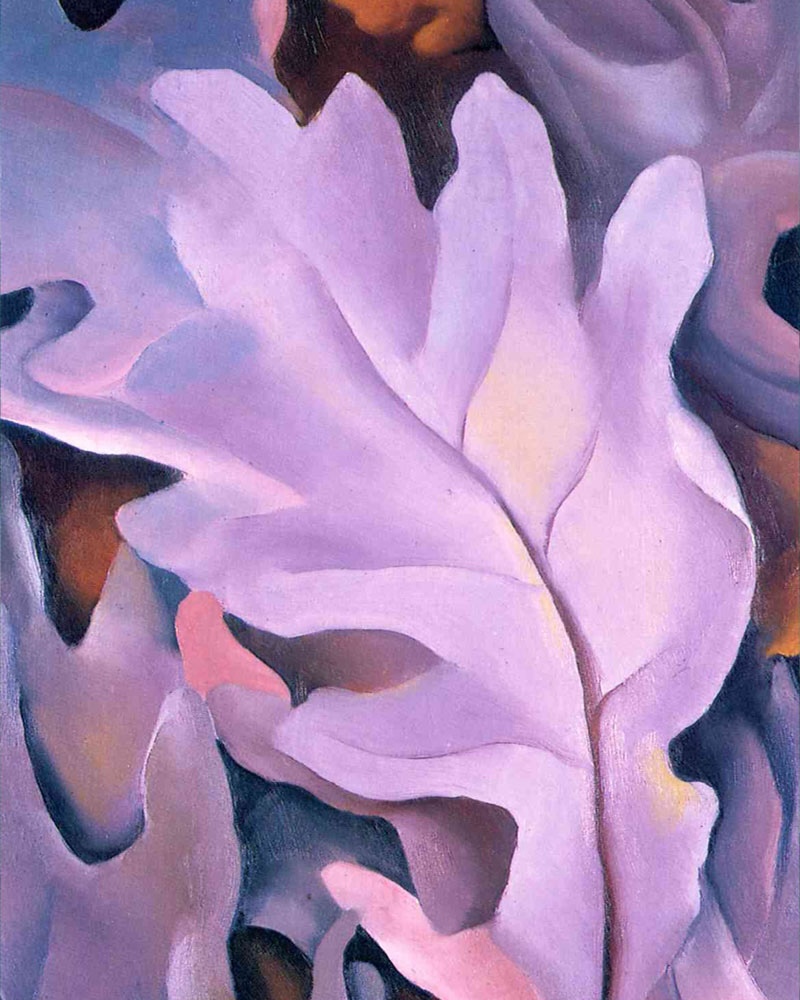
Title: Purple Leaves – detail –
Artist: Georgia O’Keeffe
Year: 1922
Today I’d like to share with you the amazing work of American painter Georgia O’Keeffe (1887 – 1986), a woman who dared to paint flowers like nobody’s business. Forget your dainty posies and blushing buds. O’Keeffe zoomed in, close-up, on the raw sensuality of nature, turning petals into portals and stems into seductive curves.
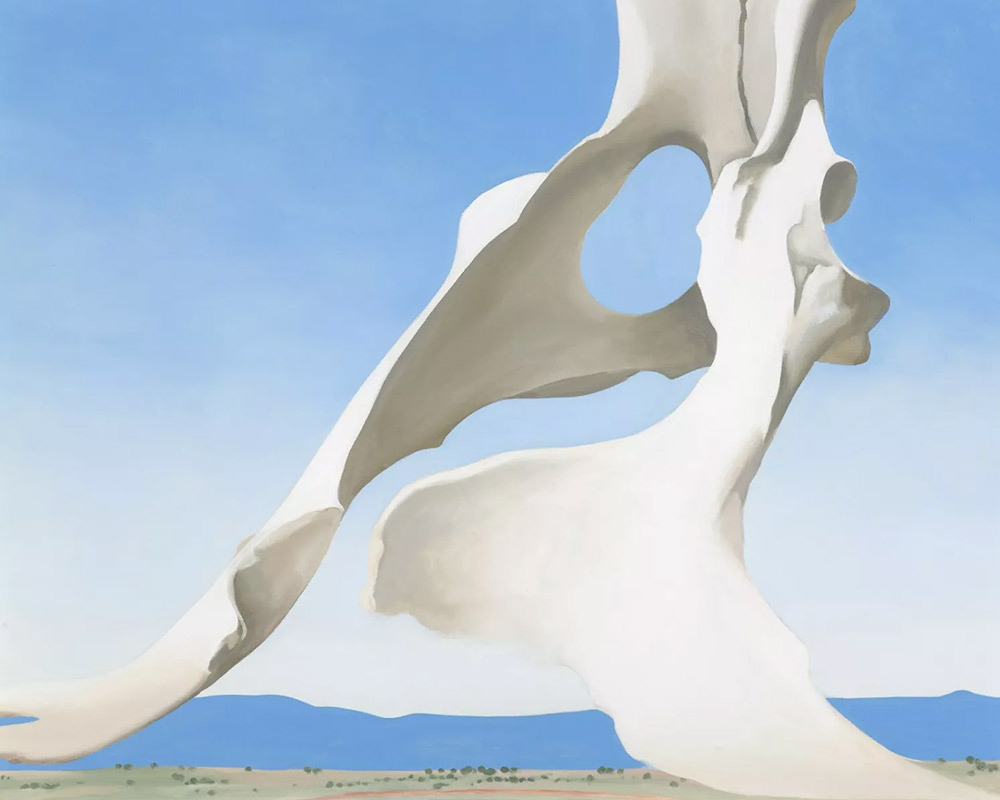
Indeed, her story is a proof of how tenacious the artistic spirit could be. In a world dominated by male egos, she made her own path, refusing to be relegated to the margins of “pretty landscape” painting. Her magnified blooms weren’t just flowers; they were explosions of color, metaphors for female sexuality, and odes to the raw power of nature.
Imagine a Wisconsin farm girl, early 20th century, who dreams of art not cows. She tackles New York City, studies with titans like Arthur Wesley Dow. And then boom!. Alfred Stieglitz, the photography maverick, falls for her work and her (talk about a power couple!). He champions her, exhibits her, and suddenly, O’Keeffe’s zoomed-in blossoms explode onto the scene.
While much has been made of her complicated relationship with Stieglitz, O’Keeffe’s genius undeniably stood on its own, fueled by an indomitable spirit and a vision that refused to be overshadowed.
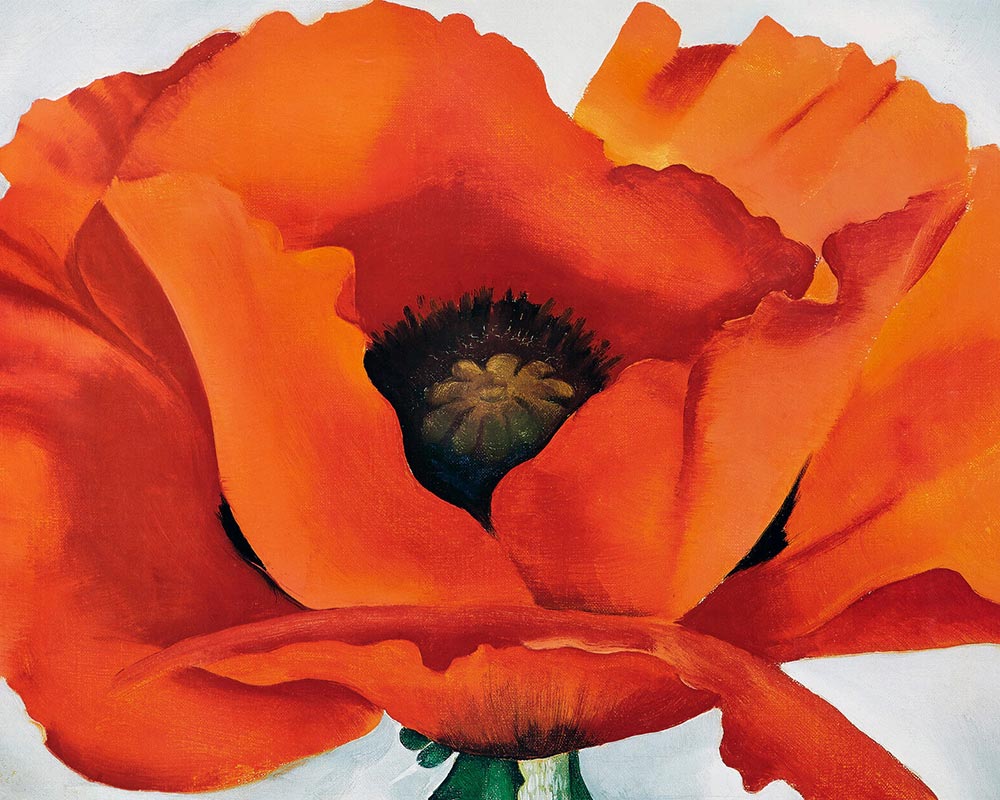
Now, what exactly makes these flowers so darn captivating?. Firstly, O’Keeffe wasn’t shy about abstraction. Sure, there’s the recognizable iris or poppy, but she bends and twists them, plays with light and shadow, until they become landscapes of their own. Just imagine a velvety black backdrop cradling a sunburst of yellow petals, or a single calla lily’s trumpet unfurling like a secret invitation.
Secondly, O’Keeffe wasn’t afraid of sensuality. Those flowers pulsate with life, their textures mimicking skin, their shapes hinting at something intimate, even erotic. Is that a pistil or a lover’s whisper?, A stamen or a vein throbbing with desire? O’Keeffe leaves it to the viewer’s imagination, these suggestions are undeniable.
But it’s not all flowers and flirtation. O’Keeffe, the desert dweller, found beauty in the starkness of New Mexico’s landscapes. She arrived there looking for a place to develop herself as an artist, away from the New York art scene and critics. Bleached bones, skies, and the occasional defiant cactus become odes to resilience, studies in negative space that sing with their silence. I particularly love this series.

So, the next time you see an O’Keeffe, don’t just admire the brushstrokes. Dive in deeper and try to see those flowers becoming a whole world, let those bones whisper their stories. Only then you’ll be able to see that O’Keeffe wasn’t just painting nature; she was unveiling its hidden language, its secret poems written in petals and dust. And there, my friends, resides the true magic of her art.
Maybe your next project could be inspired by a magnified leaf, a sun-bleached rock, or even the latent sensuality in nature’s beautiful shapes. Remember that beauty lies everywhere, especially in the most unexpected places, silently waiting to be unveiled.
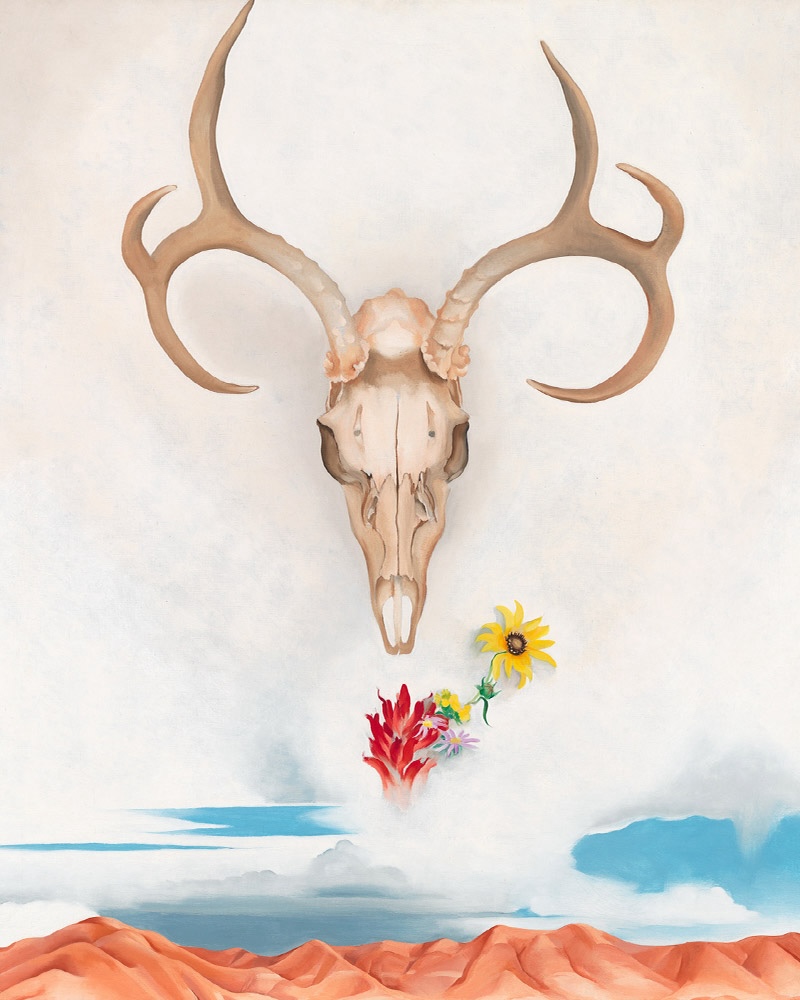
Title: Summer Days
Artist: Georgia O’Keeffe
Year: 1936
This composition belongs to a group of paintings in which the artist depicted the sun-bleached bones she brought back east from her summer sojourns in New Mexico. The deer, horse, mule, and steer skulls she collected, as one would gather wildflowers, became potent souvenirs of a landscape that had deeply inspired her. As she explained, “The bones cut sharply to the center of something that is keenly alive in the desert”.
Finally, as an art director, I can’t help but admire O’Keeffe’s masterful use of composition and color. It’s almost photographic and still feels modern in our days. The stark contrasts and bold shapes are a masterclass in visual storytelling. Think about how you can apply those lessons to your own work!
Hope this post sparks some creative fires!
